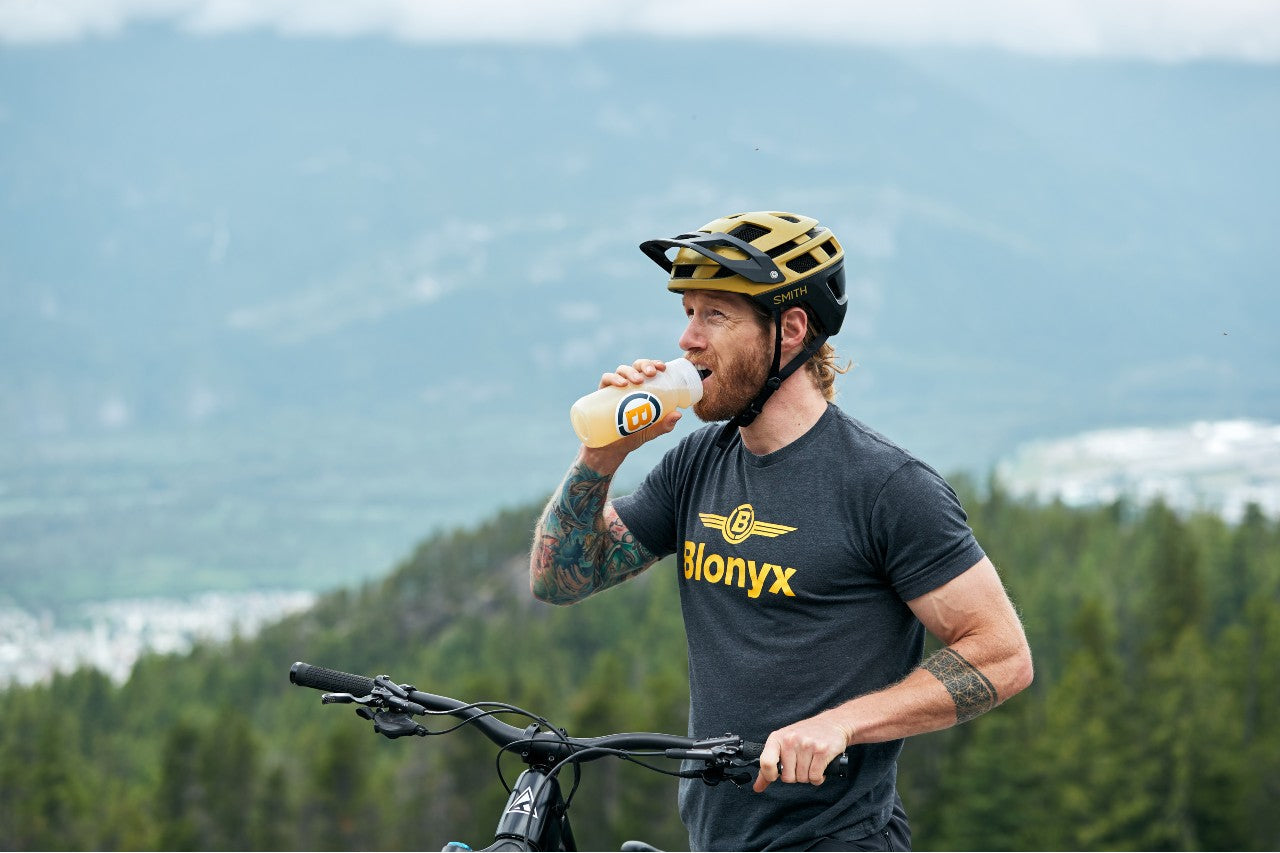If marketing is to be believed, dehydration is a performance killer. But, the research suggests that a slight degree of dehydration—just 1–2% of body weight—can actually benefit endurance performance.
This concept, called tactical dehydration, is gaining traction among runners, cyclists, and triathletes who want to reduce race-day weight and train the body to handle it. When done correctly, mild dehydration doesn’t necessarily impact performance in real world settings, and it can actually improve performance as body weight drops.
What You’ll Learn in This Article
-
What tactical dehydration is and how it can improve endurance performance
-
Why it’s not the same as being dangerously dehydrated
-
How to train your body to perform while slightly dehydrated
-
Why using a hydration drink like Blonyx Hydra+ helps control dehydration
-
When tactical dehydration is not recommended
What Is Tactical Dehydration?
Tactical dehydration is the deliberate practice of training or racing with slight dehydration, usually losing around 1–2% of body weight.
This approach aims to help athletes adapt and maintain performance under a lighter body mass without negative impacts.
Dr. John Brewer, professor of applied sport science at St Mary’s University in the UK, explains how conditioned athletes can benefit: “Think about it, each litre of fluid lost equates to roughly 1kg of body weight. Carrying less weight improves endurance performance, so training to handle this can be more effective than trying to avoid dehydration altogether.”
How to Use Tactical Dehydration to Improve Performance

Training to perform while slightly dehydrated takes preparation and precise execution. Here’s how to do it safely.
Disclaimer: There can be risks associated with tactical dehydration.
Severe dehydration can cause you a lot of harm, so please don’t try tactical dehydration if you have any medical conditions that could impact your water balance or hydration status. Also, older athletes can be more susceptible to severe dehydration. Please be careful, and if in doubt, seek medical clearance before trying it.
Step 1: Train While Mildly Dehydrated
Spend about a week training in a mildly dehydrated state to help your body adapt and teach yourself to recognize that "feel":
-
Ensure you’re in your normal fed and hydrated state and measure your baseline body weight
-
Determine your target weight (1–2% below baseline)
-
Have a hydration drink on hand (we suggest one like Blonyx Hydra+, which was designed for tactical dehydration)
-
Train for 60–90 minute endurance session that will make you break a sweat
-
During regular breaks, stop to weigh yourself and sip your hydration drink if needed to stay within 1–2% of baseline
-
Rehydrate with plenty of carbohydrates and fluids after your session
-
Repeat this process five times in a row to get used to it, and log every session’s intensity, temperature, and water intake to identify your normalized range
This process helps expand your plasma volume to support dehydration while retaining performance and feeling lighter on race day.
Step 2: Apply Your Learnings Without a Scale
When you're more comfortable training slightly dehydrated, practice maintaining mild dehydration without weighing. The goal is to be able to maintain mild levels of dehydration consistently without having to weigh yourself. Here’s how:
-
Repeat the process from step 1, but estimate your fluid intake based on how you feel during training
-
Weigh yourself afterward to confirm accuracy
-
Repeat until you can reliably approximate your dehydrated state by feel
It may take a few tries, but once you have this process nailed, you’re ready to incorporate tactical dehydration into your training and racing, and will quickly start to see the benefits of being a little bit lighter.
Use a Hydration Mix to Maintain the Sweet Spot

Staying between 0–2% dehydrated is easier when using a mild hydration drink that contains electrolytes and glucose to help regulate absorption.
We developed Blonyx Hydra+ to support tactical dehydration with real‑food ingredients like mango and passionfruit juice, coconut water, sea salt, and organic cane sugar to endure it:
-
Supports precise fluid balance
-
Tastes like light fruit juice
-
Isn’t overly salty like traditional sports drinks
-
Offers flexible dosages to suit training intensity
Learn more about why real food hydration works better, especially without all the added salt.
Key Takeaways
Here’s what you should remember if you’re considering tactical dehydration:
-
Tactical dehydration helps train your body to perform while 1–2% dehydrated, improving efficiency without sacrificing performance.
-
You should start by conditioning your body with several training sessions in that mild dehydration range.
-
Over time, you can learn to train without needing to weigh yourself—just rely on recognized cues and consistent “feel.”
-
A hydration tool like Blonyx Hydra+ helps manage fluid loss safely using real-food ingredients.
-
This approach is not for everyone; exceptions include medical conditions or age-related vulnerabilities.
When done properly, tactical dehydration is a smart strategy to shave weight, improve endurance, and enhance race-day efficiency—just proceed with caution and listen to your body's feedback.
If you learned something new from this article and are curious to know more, check out the Blonyx Blog or head to our growing list of weekly sports science research summaries where we help you further improve your athletic performance by keeping you up to date on the latest findings.
Looking for more ways to keep up with Blonyx?
Join the Blonyx Strava Club to track your progress, share training tips, and connect with athletes who share your athletic ambition.
You can also follow us on Instagram and Facebook for additional sports science information, announcements, exciting giveaways, and more!

Blonyx Hydra+
Hydra+ provides the training body with electrolytes and carbs using real food ingredients like coconut water, mango, passionfruit and sea salt. It’s a versatile drink mix that can be used to replenish electrolytes and carbs in shorter, higher intensity training, or adjusted to maintain optimal hydration status on longer duration, sweaty training sessions.
Hydra+ tastes like a light fruit juice, isn’t saturated with salt (as research shows it’s not needed) and is focused on ensuring you perform at your best by staying between 0-2% dehydrated.

